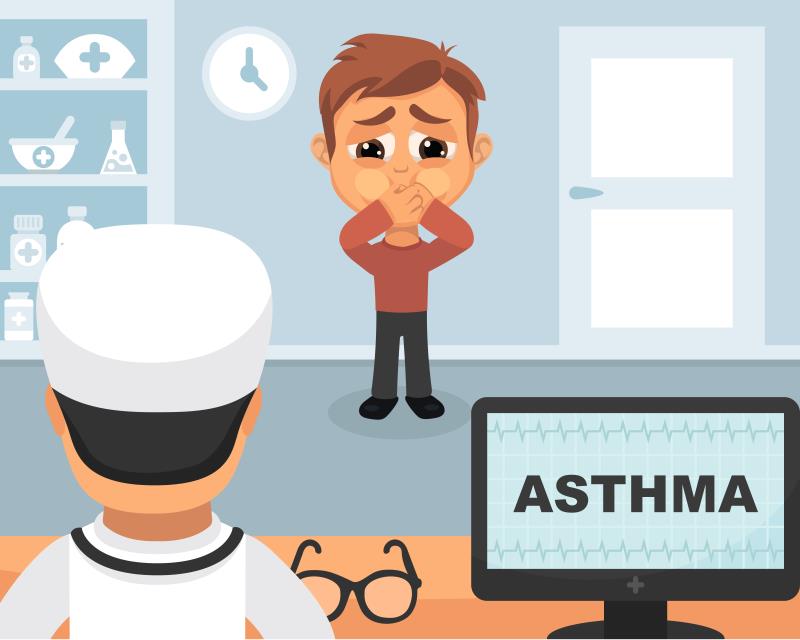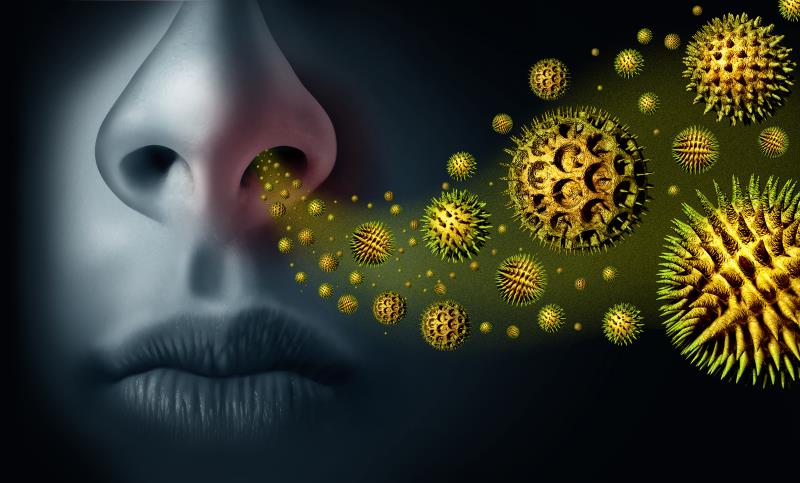Content on this page:
Content on this page:
Overview
Allergic rhinitis is also called hay fever or allergic
rhinosinusitis and is defined in the Introduction
section.
Allergic rhinitis affects approximately 5-10% of the
worldwide population. The Epidemiology
section gives a detailed discussion on the cases affected by allergic rhinitis
worldwide.
There may be various diatheses for allergic rhinitis
sensitization, but the most important mechanisms are genetic factors and the
production of IgE antibody. These mechanisms are discussed in the Pathophysiology section.
Allergic rhinitis has different types and is classified
according to severity and frequency of symptoms and based on patterns of
exposure to allergens. The Classification
section described each one of these types.
As mentioned in the Risk
Factors section, while breastfeeding and early exposure to pets in
non-allergic families are protective, genetics and food allergy during
childhood are noted risk factors for allergic rhinitis.
History and Physical Examination
Patients with allergic rhinitis typically presents with nasal
itching, watery rhinorrhea, nasal obstruction or congestion, sneezing, and
postnasal drainage. Other symptoms are further discussed in the Clinical Presentation section.
The Physical Examination sections enumerate these signs and symptoms. In the History section, the essential information
that needs to be elicited from the patient to come up with the proper diagnosis
and management are mentioned.
Diagnosis
The Laboratory Tests and
Ancillaries section discusses allergy testing that can help in
the management of the disease and the identification of allergens to facilitate
avoidance.
Other diseases that have similar symptoms should
be ruled out are listed in the Differential
Diagnosis section. This section also has information about
allergic asthma.
Management
The assessment of the patient’s allergic rhinitis will be
based on the patient’s symptomatology, the patient’s exposure to allergens, and
the visual analog scales (VAS). Discussion of these
assessment parameters is in the Evaluation
section. Visual analog scales (VAS), evaluation of disease control and the MACVIA-ARIA
Sentinel NetworK for Allergic Rhinitis (MASK-Rhinitis) approach are elaborated
in this section as well.
Treatment is based on the duration and severity of symptoms.
A stepwise approach to treatment is recommended for adolescents and adults.
Step down therapy as the patient’s symptoms improve and step up when the
symptoms worsen. Detailed information regarding these 2 approaches is in
the Principles of Therapy
section.
Drugs that can be considered in the management of allergic
rhinitis such as anticholinergics, corticosteroids, immunotherapy, etc are
enumerated and discussed in the Pharmacological
Therapy section.
Allergen avoidance strategies and patient education are
essential parts of the management of patients with allergic rhinitis and are
elaborated in the Nonpharmacological
section.
Inferior turbinate
reduction is a surgical procedure that can be performed for patients with
persistent allergic rhinitis and is discussed in the Surgery section.
Referral to an immunology or allergy specialist
is recommended if warranted. Indications for referral of patients with
allergic rhinitis are in the Monitoring section.








